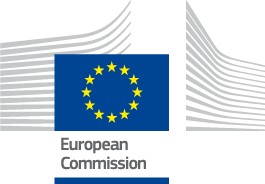

Good Practice Method
All (F)LAGs have to develop project selection criteria, carry out a transparent selection process, gather and report information on outputs and results of projects implemented by beneficiaries. In Denmark, the MA decided to help the 26 LAGs and 10 FLAGs by developing an IT tool specifically tailored to the bottom-up methodology of CLLD.
Time frame: the development of the system was initiated in June 2014 and PROMIS was launched in August 2015 for LAGs (and May 2016 for FLAGs).
The Project Result-Oriented Management and Information System (PROMIS) aims to facilitate the work of all CLLD actors throughout the whole process of supporting projects.
The MA contracted experts who developed the system. There are three levels of access:
(1) Project applicants and project promoters;
(2) (F)LAG managers and board members;
(3) The managing authority.
The system is based on a single application form for all (F)LAG interventions, but depending on options selected by applicants, only relevant questions have to be answered. Predefined indicators of outputs, results and impacts are included, but applicants can also add other indicators relevant to their projects. The (F)LAG manager and board members can access the system, monitor the drafts and provide assistance to applicants or ask them questions.
The board assesses the applications using selection criteria developed jointly by LAGs and FLAGs. The eight mandatory prioritisation criteria include:
Before launching a call, (F)LAGs decide on an appropriate weighting for the criteria and sub-criteria, and may decide to give a higher weighting to those that are most relevant to the local strategy. FLAGs can also add new criteria, with appropriate weightings, prioritising, for example young applicants, territories with specific needs or other local criteria. Minimum scores for certain criteria may also be established.
PROMIS also enables the collection of data and is integrated with a data analysis and visualisation tool, which can be adjusted to the reporting needs of the (F)LAGs or MA.
The amount of time needed by (F)LAGs to process applications has been significantly reduced (some managers report a reduction of 50%). The MA has a good overview of projects in different (F)LAGs (amounts, objectives, support). The prioritisation tool has proved to be a very democratic and participatory tool, supporting board discussion and leading to a consensus on scores.
The tool could be used in all EU countries, including those with regional programmes. It could also be used at the EU level, to integrate data from all countries, without interference with local, regional or national objectives and priorities.
When developing such software, it is important to ensure close interaction with (F)LAG managers and the MA/PA and take all interests into consideration. The system was initially designed only for prioritisation and monitoring and evaluation, other functions were added later on. It would have been easier, however, if the decision to make it a full project administration system had been taken right from the start.
Consultants with a good understanding of CLLD principles, evaluation and software development. The use of the software requires some training (it is estimated that a 1.5-2-day workshop for FLAG coordinators and MA/PA staff would be required, as well as basic information for board members).
€425 000 including:
A FLAG administration staff member to help prepare the final report.
| Sea Basins |
|
|---|---|
| Type of area |
|
| Theme |